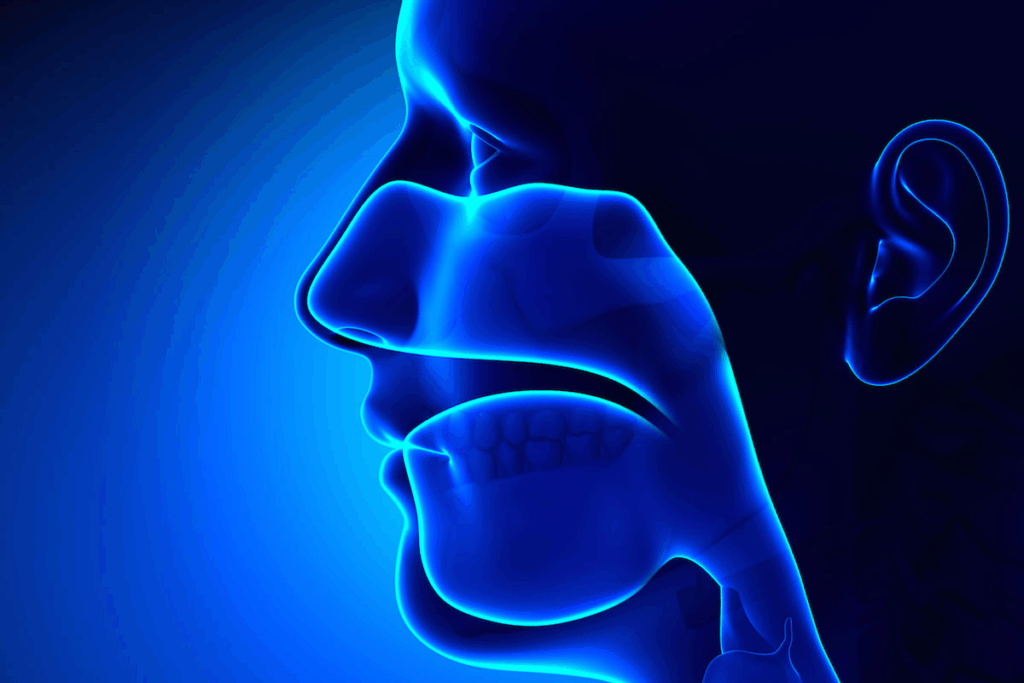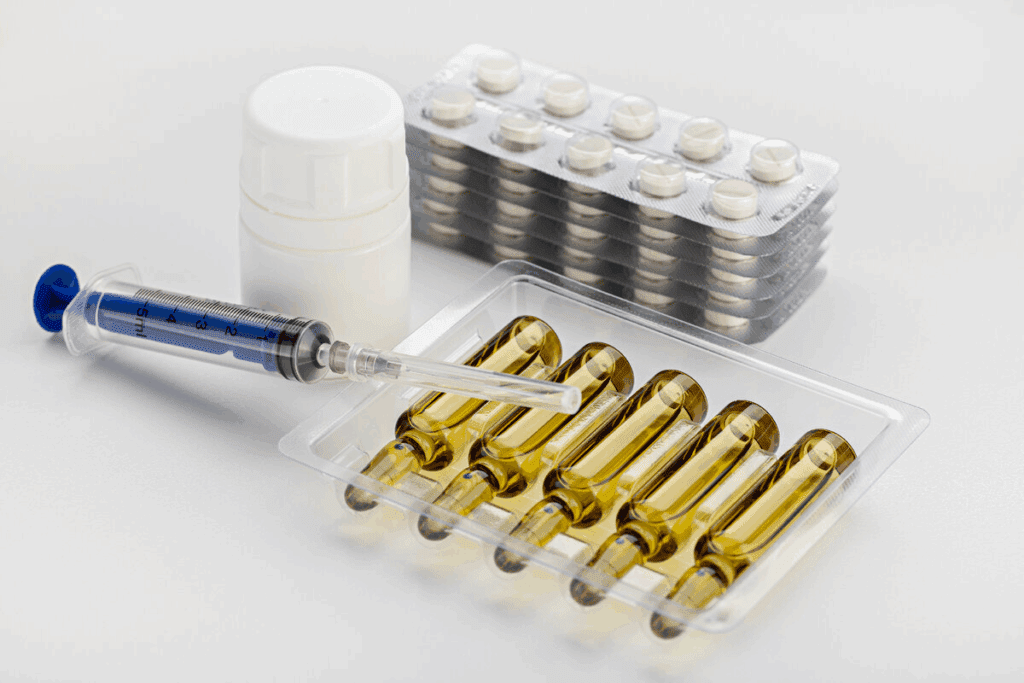Last Updated on October 31, 2025 by Saadet Demir

Many people feel neck pain and wonder if it’s from a sinus infection. Research shows that about 29-31 million adults in the U.S. get sinusitis each year. Why your neck hurts sinus infection related: Learn about the referred pain and muscle tension from sinusitis.
Studies found that 84 percent of those with sinus headaches also have neck pain. This shows a strong link between these two issues. At Liv Hospital, we understand how complex symptoms can be. We focus on finding the right diagnosis and treatment.

Sinus infections, or sinusitis, happen when the sinuses get inflamed or infected. This leads to uncomfortable symptoms. Knowing about our sinuses helps us understand these infections better.
The sinuses are air-filled spaces in the nose’s passages. They make mucus to humidify the air and filter out dust and bacteria. There are four pairs of sinuses: frontal, maxillary, ethmoid, and sphenoid. The mucus drains into the nasal cavity through small channels.
Sinusitis is divided into three types based on how long it lasts and how often it happens:
Knowing these types helps us choose the right treatment.
About 29-31 million adults in the United States get sinusitis each year. It’s usually caused by a virus and can last even after other symptoms are gone. Sometimes, bacteria or fungi can cause it too.
Type of Sinusitis | Duration | Common Causes |
Acute | Up to 4 weeks | Viral infections |
Subacute | 4 to 12 weeks | Prolonged viral or bacterial infections |
Chronic | 12 weeks or more | Bacterial infections, allergies, or anatomical issues |
Sinus infections are a big health issue in the United States. They affect a lot of people every year.
“Sinusitis is a common condition that can significantly impact a person’s quality of life. Understanding its causes and types is essential for effective management.”

Research shows a strong link between sinus infections and neck pain. Almost 84 percent of those with sinus headaches also have neck pain. This highlights a clear connection between the two.
Studies confirm a strong link between sinus infections and neck pain. For example, a study found most patients with sinusitis also had neck pain. This shows why we should look at sinus infections when diagnosing neck pain.
Study | Sample Size | Patients Reporting Neck Pain | Percentage |
Sinusitis and Neck Pain Study | 1000 | 840 | 84% |
Sinus Headaches and Neck Pain | 500 | 410 | 82% |
When sinuses get inflamed, swelling can irritate nearby tissues and nerves. This leads to referred pain in the neck and shoulders. The complex nerve network in the face and neck makes this possible.
The inflammation from sinus infections can cause different pain patterns. Referred pain is common in sinusitis patients. Understanding these patterns helps in diagnosing and treating neck pain.
Healthcare providers can now treat both sinus infections and neck pain more effectively. This approach helps address the root cause of symptoms.
When a sinus infection strikes, it can make your neck stiff. This isn’t just a coincidence. There are real reasons behind it.
Swollen lymph nodes in the neck are a big reason for neck stiffness. When your body fights off the infection, these nodes get bigger. This makes you feel pain and stiffness. Swollen lymph nodes mean your body is working hard to fight off the infection.
Sinus infections cause pain, which makes your neck muscles tense up. This tension is your body’s way of protecting itself. The muscle tension gets worse as your body tries to shield the affected area.
“The connection between sinus pressure and neck pain is well-documented, with many patients experiencing relief from neck stiffness once the underlying sinus infection is treated.”
When we’re not feeling well, we often slouch or hunch over. This can put strain on our necks. Maintaining good posture is key, even when we’re sick.
Cause | Effect on Neck |
Swollen Lymph Nodes | Neck pain and stiffness |
Muscle Tension | Increased stiffness and discomfort |
Postural Changes | Strain on cervical spine |
Knowing how sinus infections affect our necks helps us find better treatments. By tackling the infection and its symptoms, we can ease the pain and stiffness.
The sphenoid and ethmoid sinuses play a big role in neck pain caused by sinuses. These sinuses are deep in the skull, close to the neck. When they get inflamed or infected, they can send pain to the neck.
The sphenoid sinuses are in the sphenoid bone, at the skull’s base. They are near the neck and nerves. This makes them a big reason for neck pain when they get sick or inflamed.
Key factors linking sphenoid sinuses to neck pain:
The ethmoid sinuses are small air cells in the ethmoid bone. They are between the nose and the eye. When these sinuses get sick or inflamed, they can send pain to the neck.
Sinus Group | Location | Common Symptoms |
Sphenoid | Base of the skull | Neck pain, headache |
Ethmoid | Between nasal cavity and orbit | Facial pain, referred neck pain |
When sinuses get infected, they can drain into the throat. This can make the throat sore and cause neck pain. The swelling and inflammation in the throat can make the neck even more painful.
The mechanism involves:
Knowing how sphenoid and ethmoid sinuses affect the neck is key. Doctors can then focus on treating both the sinus infection and the neck pain.
Understanding sinus-related neck pain means knowing the pain patterns and symptoms. Neck pain from a sinus infection often comes with other signs. These signs help doctors diagnose the issue correctly.
The pain from sinus-related neck pain can feel different and be in various spots. It usually feels like a dull ache or stiffness in the neck, spreading to the back of the head. Movements that raise sinus pressure, like bending forward or lying down, can make it worse. The way the pain shows up can help tell it apart from other neck pain causes.
Neck pain from sinuses often comes with other symptoms like nasal congestion, facial pressure, and headaches. These symptoms happen because of inflammation and infection in the sinuses, causing neck pain. Spotting these symptoms is key to getting a correct diagnosis.
Common sinus symptoms include:
Telling sinus-related neck pain from other neck pain is important for the right treatment. Other neck pain might come from muscle issues, bad posture, or other health problems. A big clue is the presence of sinus symptoms. Neck pain with sinus infection symptoms is more likely to be from sinuses.
Seeing a healthcare professional for a proper diagnosis is a good idea. They can look at the whole picture and suggest the best treatment.
Sinus infections can be caused by viruses, bacteria, allergies, or structural problems. Knowing these causes helps us prevent and treat them better.
Most sinus infections start with viruses, often after colds or flu. Sometimes, bacteria can also cause sinusitis, when sinuses are filled with fluid and grow bacteria.
Viral sinusitis usually gets better in a week or two. Bacterial sinusitis might need antibiotics. It’s important to know the difference to treat it right.
Cause | Characteristics | Typical Duration |
Viral Infection | Often follows upper respiratory infections, symptoms like nasal congestion and facial pain | 7-14 days |
Bacterial Infection | May present with thick nasal discharge, facial pain, and fever | Variable, may require antibiotics |
Allergies can also cause sinus infections. When we’re exposed to allergens, our body reacts with histamine. This leads to nasal congestion, swelling, and more mucus, making us more likely to get sinus infections.
Common allergens include pollen, dust mites, pet dander, and mold. Avoiding these and using the right medicine can help prevent sinusitis.
Structural problems in the nasal passages can also lead to sinus infections. Issues like a deviated septum or nasal polyps can block the sinuses, causing infections.
Other risks include a weak immune system, smoking, and pollution. Knowing these risks helps us prevent sinus infections from coming back.
Doctors use a mix of medical history, physical checks, and tests to find the link between sinusitis and neck pain. A general doctor or an ear, nose, and throat specialist can figure out the cause and suggest treatment.
A detailed physical check is key in spotting sinusitis and its neck effects. The doctor will look for signs like nasal blockage, facial pain, and postnasal drip. They’ll also check the neck for swelling, tenderness, or stiffness.
Key physical examination techniques include:
Imaging and lab tests help confirm sinusitis and its neck impact. These tools show if sinusitis is present, its cause, and any complications.
Diagnostic Tool | Purpose |
CT Scan of Sinuses | Detailed imaging to assess sinus anatomy and detect any abnormalities |
Nasal Endoscopy | Visual examination of the nasal passages and sinuses to identify inflammation or infection |
Blood Tests | To check for signs of infection or inflammation |
When looking at sinusitis and neck pain, other neck pain causes must be ruled out. This includes cervical spine issues, muscle strains, or other infections. A full diagnostic process ensures the right cause is found and treated.
Doctors use physical checks, imaging, and lab tests to find the link between sinusitis and neck pain. This helps in creating effective treatment plans.
Managing sinus infections and neck pain needs a mix of treatments. We’ll look at ways to tackle the infection and the pain it causes. This ensures you get full relief.
It’s key to treat the sinus infection to ease both sinus and neck pain. Antibiotics are used for bacterial infections, and antiviral medications for viral ones. Using nasal decongestants and saline nasal sprays helps clear the nose and sinuses.
Putting a warm compress on your face and neck can help. It eases tension and loosens mucus, giving you relief from sinus pressure and neck pain.
Along with treating the sinus infection, there are ways to ease neck pain. Gentle neck stretches and improving posture can help. Using over-the-counter pain relievers like acetaminophen or ibuprofen can also help manage neck pain.
There are many prescription and over-the-counter (OTC) options for sinus infection and neck pain. Prescription corticosteroid nasal sprays reduce inflammation. OTC antihistamines help with allergy-related sinus pressure. For severe neck pain, muscle relaxants might be prescribed.
There are also complementary and alternative treatments. Steam inhalation with eucalyptus oil can clear mucus. Acupuncture and chiropractic care can help with neck pain and improve sinus health. Always try these with a healthcare professional’s advice.
By using a complete treatment plan for both sinus infection and neck pain, you can feel a lot better. This approach improves your quality of life.
Preventing sinus infections is key. By using different strategies, you can lower your risk of getting them again.
Changing your environment is important. It helps avoid irritants and germs. Here’s how:
Quitting smoking is also key. Smoking harms your sinuses and raises infection risk.
A strong immune system fights infections well. Here’s how to boost it:
Supplements like vitamin C and zinc can also help your immune system.
Good nasal hygiene is vital. It helps prevent infections. Here’s how:
For those with allergies, managing them is key. Here’s how:
Prevention Strategy | Description | Benefits |
Environmental Modifications | Avoiding pollutants, using air purifiers, maintaining a clean home | Reduces exposure to irritants and pathogens |
Immune System Support | Balanced diet, regular exercise, adequate sleep | Enhances body’s ability to fight infections |
Nasal Hygiene Practices | Nasal rinsing, using humidifiers | Prevents nasal dryness and infection |
It’s important to know how sinus infections and neck pain are linked. This knowledge helps people prevent and treat these issues. It also improves their quality of life.
We’ve seen how sinus infections can lead to neck pain and stiffness. Understanding this connection is key. It helps manage neck pain by treating the root cause of sinus infections.
Healthcare providers can now create better treatment plans. These plans tackle both the sinus infection and the neck pain. This approach helps people recover faster and prevents future problems.
To manage sinus infections and neck pain, a variety of strategies are needed. These include changing the environment, boosting the immune system, and keeping the nose clean. Using these methods can help people control their condition and feel better overall.
Yes, sinus infections can lead to neck pain and stiffness. This is due to inflammation and pain patterns linked to sinusitis.
Symptoms include specific pain patterns and locations. You might also feel facial pressure and headaches. Neck stiffness is another common symptom.
Neck stiffness can result from swollen lymph nodes and muscle tension. It can also happen due to changes in posture during an infection.
The sphenoid and ethmoid sinuses are most likely to cause neck pain. This is because of their location and the way pain can be referred.
Treatment includes addressing the sinus infection and relieving neck pain. Options include prescription and over-the-counter medications, as well as alternative treatments.
Yes, sinus pressure can lead to pain in the back of the neck and head. This is more common if the sphenoid or ethmoid sinuses are involved.
To tell if neck pain is from sinus issues, look at symptoms like facial pressure and headaches. Consider pain patterns and locations. Diagnostic tests like imaging studies can also help.
Common causes include viral and bacterial infections, allergic reactions, and structural abnormalities. These can all impact the neck.
To prevent sinus infections, make environmental changes and support your immune system. Practice good nasal hygiene and manage allergies.
Yes, a sinus infection can cause neck pain and stiffness. This is due to inflammation and pain patterns associated with sinusitis.
Yes, neck pain is a common symptom of sinusitis. It’s more common when the sphenoid or ethmoid sinuses are affected.
Sinusitis and neck discomfort are connected through inflammation and pain patterns. Symptoms like facial pressure and headaches also play a role.
Subscribe to our e-newsletter to stay informed about the latest innovations in the world of health and exclusive offers!
WhatsApp us